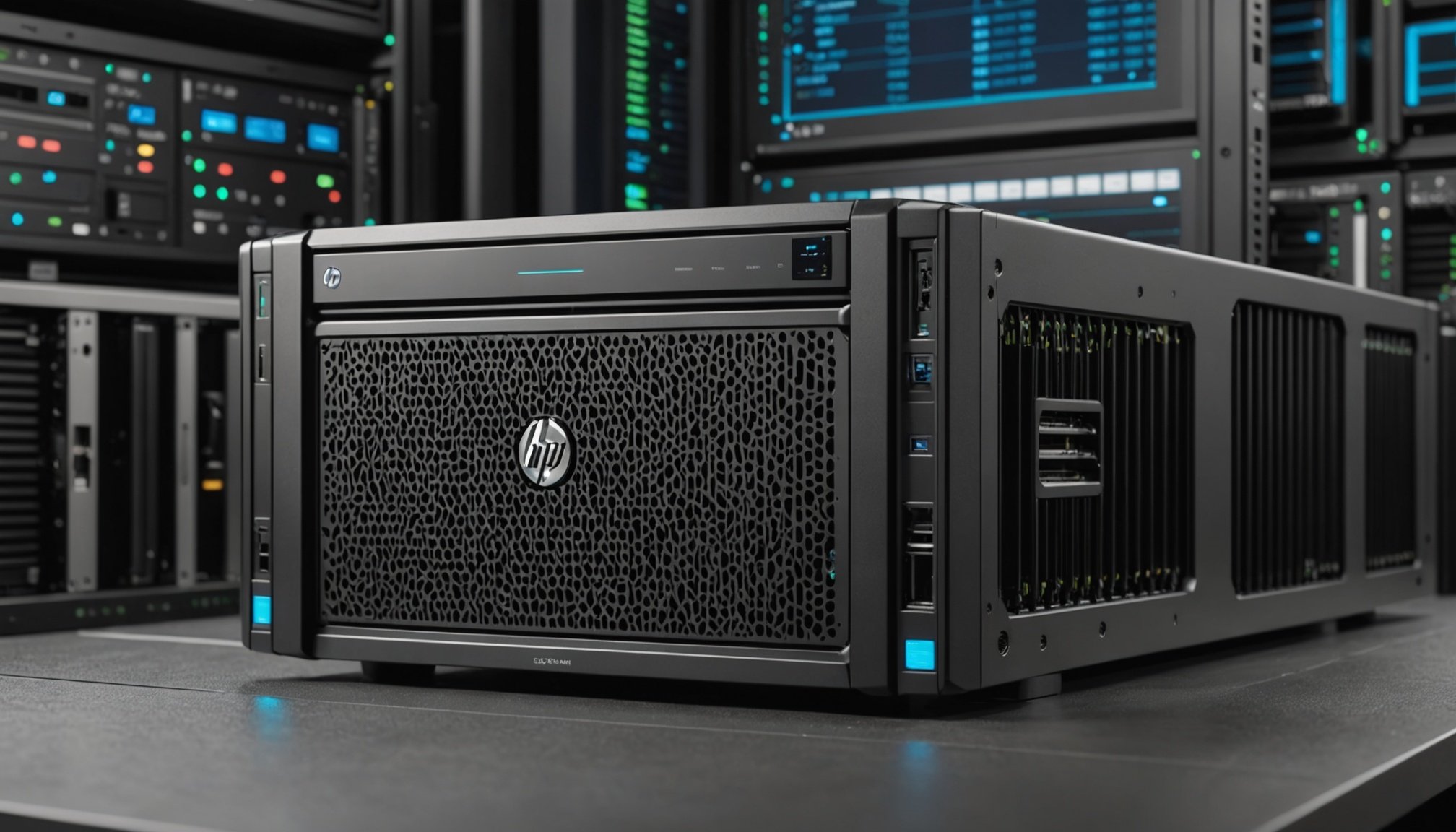Unlocking Peak Performance: Creating an Isolated Virtual Environment on Your HP ProLiant DL380 Gen10 for Enhanced Multi-Application Efficiency
Understanding the HP ProLiant DL380 Gen10 Server
When it comes to building a robust and efficient IT infrastructure, the HP ProLiant DL380 Gen10 server is a top choice for many organizations. Designed to handle a wide range of workloads, this server is renowned for its balance of performance, storage, reliability, and manageability. Here’s a closer look at what makes the DL380 Gen10 an ideal platform for creating an isolated virtual environment.
Key Features of the HP ProLiant DL380 Gen10
- Processors and Performance: The DL380 Gen10 supports up to two Intel® Xeon® Scalable processors from the 3200-8200 series, offering up to 28 cores per processor. This configuration ensures exceptional multi-threaded performance and efficient handling of demanding workloads[2].
- Memory and Expansion: Equipped with up to 24 DIMM slots, the server supports up to 3TB of HPE DDR4 Smart Memory, with speeds of up to 2933 MT/s. Multiple PCIe Gen 3.0 slots provide excellent expandability for high-speed network cards, RAID controllers, or other peripherals[2].
- Storage Options: The server can accommodate up to 12 x 3.5″ LFF drives or up to 24 x 2.5″ SFF drives, offering flexible storage configurations for various data-intensive applications. It also supports NVMe, SAS, and SATA drives to meet specific workload demands[2].
- Network Connectivity: Built-in 4 x 1GbE Ethernet adapters come standard, with options for additional connectivity through HPE Flexible LOM and PCIe stand-up cards[2].
The Importance of Virtualization in Modern IT Environments
Virtualization is a cornerstone of modern IT infrastructure, allowing organizations to maximize hardware utilization, improve resource allocation, and enhance overall efficiency.
Have you seen this : Maximize Your Small Business Storage: The Ultimate Guide to Optimal RAID Configurations for QNAP TS-673A NAS
Benefits of Virtualization
- Resource Optimization: Virtualization enables multiple virtual machines (VMs) to run on a single physical server, optimizing resource usage and reducing hardware costs.
- Flexibility and Scalability: Virtual environments can be easily scaled up or down to meet changing business needs, making them highly adaptable.
- Enhanced Security: Virtualization technologies like KVM, Hyper-V, and Xen offer robust security features such as VM isolation, encryption, and access controls to protect sensitive data[3].
Choosing the Right Virtualization Technology
Selecting the appropriate virtualization platform is crucial for creating an isolated and efficient virtual environment.
Comparison of KVM, Hyper-V, and Xen
| Virtualization Technology | Key Features | Security Highlights |
|---|---|---|
| KVM | Built on Linux, supports multiple guest OS, SELinux integration | Mandatory Access Control (MAC), SELinux integration, VM isolation[3] |
| Hyper-V | Part of Windows Server, supports Shielded VMs, BitLocker encryption | Shielded VMs, BitLocker encryption, Virtual Trusted Platform Module (vTPM)[3] |
| Xen | High customization, supports multiple guest OS, paravirtualization | Domain-based security, open-source transparency, support for paravirtualization[3] |
Each technology has its strengths and is suited to different environments and needs. For example, KVM is known for its strong Linux-based security features, while Hyper-V integrates well with Windows environments and offers robust encryption options.
Also read : Transform your it landscape with refurbished servers today
Setting Up an Isolated Virtual Environment on the HP ProLiant DL380 Gen10
Creating an isolated virtual environment involves several steps, from selecting the right virtualization software to configuring the server and ensuring robust security measures.
Step-by-Step Guide to Setting Up Virtualization
- Selecting the Virtualization Software:
- Based on your organization’s needs and existing infrastructure, choose between KVM, Hyper-V, or Xen. For instance, if you are already using Windows Server, Hyper-V might be the most seamless choice[3].
- Configuring the Server:
- Ensure the HP ProLiant DL380 Gen10 is equipped with sufficient memory and storage to support multiple VMs. The server’s support for up to 3TB of DDR4 memory and various storage options makes it an excellent choice[2].
- Install the chosen virtualization software and configure the initial setup, including network settings and storage allocations.
- Creating Virtual Machines:
- Use the virtualization software to create isolated VMs. For example, with Hyper-V, you can create Shielded VMs to protect sensitive data from unauthorized access[3].
- Allocate resources such as CPU, memory, and storage to each VM based on the specific application requirements.
- Enhancing Security:
- Implement robust security measures such as VM isolation, encryption, and access controls. For instance, Xen’s domain-based security ensures that virtual spaces are kept apart to avoid data breaches and interference[3].
- Use tools like HPE iLO 5 for remote monitoring, configuration, and troubleshooting. This integrated management tool provides comprehensive remote management capabilities and enhances security with features like Silicon Root of Trust and Secure Recovery[2].
Optimizing Performance and Efficiency
To ensure peak performance and efficiency in your virtual environment, several optimization strategies can be employed.
Hardware Optimization
- Storage Solutions: Utilize high-speed storage options like NVMe drives to reduce latency in I/O operations. The DL380 Gen10’s support for NVMe, SAS, and SATA drives provides flexibility in storage configurations[2].
- Networking: Leverage the server’s built-in 10GbE networking capabilities and optional higher-speed adapters to ensure high-speed data transfers. This is particularly important for data-intensive applications[2].
Software Optimization
- Resource Allocation: Optimize resource allocation among VMs to ensure each application receives the necessary resources without overloading the server.
- Adaptive Optimization: Use tools like HPE’s adaptive optimization features to dynamically adjust resource allocation based on workload demands.
Practical Insights and Actionable Advice
Customer Needs and Solutions
When setting up a virtual environment, it’s crucial to align the configuration with the specific needs of your customers.
- Question Customer Needs: Understand the types of applications that will be running on the VMs and the resource requirements for each.
- Answer with Tailored Solutions: Configure the server and virtual environment to meet these needs, ensuring that the hardware and software are optimized for the intended workloads.
Example Configuration
Here’s an example of how you might configure the HP ProLiant DL380 Gen10 for a multi-application environment:
| Application | CPU Cores | Memory | Storage |
|---|---|---|---|
| Web Server | 4 | 16GB | 2 x 1TB NVMe |
| Database Server | 8 | 32GB | 4 x 2TB SAS |
| Virtual Desktops | 6 | 24GB | 2 x 1TB SATA |
This configuration ensures that each application has the necessary resources to run efficiently without overloading the server.
Creating an isolated virtual environment on the HP ProLiant DL380 Gen10 server is a powerful way to enhance multi-application efficiency and optimize resource utilization. By selecting the right virtualization technology, configuring the server appropriately, and implementing robust security and optimization strategies, organizations can achieve peak performance and meet the evolving needs of their customers.
Final Thoughts
- HPE Storage Solutions: When considering storage, HPE offers a range of solutions including HPE Nimble Storage and HPE StoreOnce, which can be integrated seamlessly with the DL380 Gen10 to provide a nimble and efficient storage array[4].
- HPE Tool Integration: Utilize HPE tools like HPE OneView for converged infrastructure management to streamline server management and ensure that your virtual environment is always optimized and secure[4].
By following these guidelines and leveraging the advanced features of the HP ProLiant DL380 Gen10, you can build a virtual environment that is not only isolated and secure but also highly efficient and adaptable to your organization’s needs.










